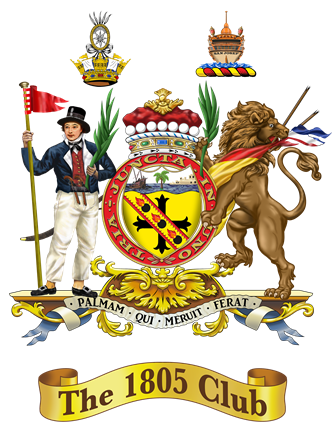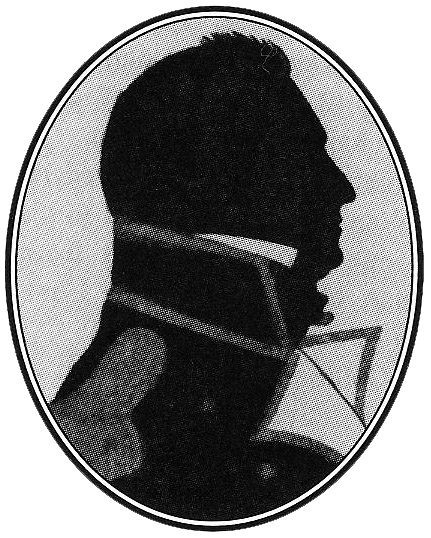The 1805 Club uses cookies to ensure you have the best possible online experience. By continuing to use this site you consent to the use of cookies in accordance with our cookie policy.
As a lieutenant, Lapenotiere was responsible in 1805 for delivering to the Admiralty in London the news of both the victory of Trafalgar and the death of Nelson.
Off Cape Trafalgar on 26 October, five days after the battle, Collingwood entrusted his Trafalgar dispatch to Lapenotiere, who commanded HM Schooner Pickle, with orders to deliver it to the Admiralty in London. The task was given by Collingwood to Lapenotiere in recognition of his initiative some years earlier in preventing a ship in which they were both passengers from foundering.
On reaching the western approaches to the English Channel on 1 November, Lapenotiere was prevented by adverse winds from progressing further up Channel. He therefore put into Falmouth and landed with the dispatch at noon on 4 November, organised transport to London by post chaise, and arrived at the Admiralty in Whitehall at 1am on 6 November after a continuous 271-mile journey of thirty-six hours, including twenty-one changes of horses. He delivered the dispatch to William Marsden, Secretary to the Navy, who promptly alerted Lord Barham, First Lord of the Admiralty. Copies of the dispatch were then made and delivered to William Pitt, Prime Minister, at 3am, to the King, who was at Windsor, and other key figures in London.
Lapenotiere received promotion to commander and a £500 gratuity for his achievement and was subsequently awarded a 100-guinea sword by the Lloyd’s Patriotic Fund. King George III also presented him with a silver sugar sifter (now in Liskeard Museum in Cornwall).
John Richards Lapenotiere was a member of an old Huguenot family that had settled in Devon and had had a continuous record of military service to the Crown. He first went to sea at the age of ten in the armed ship Three Sisters, under the protection of his father. Then in 1785, as a gentleman volunteer at the age of fifteen, he joined a commercial expedition under Lieutenant Nathaniel Portlock, who had previously sailed with Captain James Cook, to exploit the potential in the fur trade on the north-west coast of America. After returning to England in 1788, he then served successively as a midshipman in the sloop Scout (14) and the Magnificent (74). Then, in 1791, at the age of twenty-one, he joined the merchant ship Assistance, again commanded by Nathaniel Portlock, as an able seaman. The Assistance sailed as a tender to Captain William Bligh’s ship, the Providence (12), in his second breadfruit expedition to the Pacific, the first having been frustrated by the mutiny in the Bounty.
Shortly after returning to England in 1793, Lapenotiere joined the Margarita (38), part of the British West Indies fleet commanded by Vice Admiral Sir John Jervis. He then transferred briefly to Jervis’s flagship, the Boyne (98), before being promoted lieutenant and appointed to the command of the schooner Berbice (16). Then, in 1795, he returned to England as first lieutenant in the Resource (40).
In 1800, after serving uneventfully in a frigate and three ships of the line in the North Sea and Channel fleets, he was appointed to the command of the hired cutter Joseph. He engaged in several successful actions to disrupt French coastal shipping near Brest, earning himself the written approbation of the commander-in-chief, Earl St Vincent.
Shortly after the Joseph was paid off in 1802, he was appointed to the command of the Pickle (10), a Bermuda-built schooner that had been bought into the Royal Navy in the West Indies. In the Pickle, he earned great approval in 1804 for his efforts in saving the crew of the Magnificent (74), in which he had five years earlier served as midshipman, when she was wrecked near Brest. And later, when attached to Nelson’s fleet prior to Trafalgar, he captured a Portuguese ship with a cargo of bullocks, which he sent on to the fleet for replenishment of their supplies of fresh meat.
After his promotion to commander following the delivery of the Trafalgar dispatch, Lapenotiere briefly commanded the armed ship Chapman (16), based in Scotland, before joining his last command, the brig Orestes (16), in late 1806. The Orestes served on the North Sea station until 1807, when she joined the fleet of Admiral Gambier bound for Copenhagen. Off Elsinore, he was injured and badly burnt by a flash-back from one of the guns, but continued in command of the ship, which was transferred to the Plymouth station. From here he captured a letter of marque, La Conception, an American merchantman and the Loup Garou (16), anewly-built French privateer.
Lapenotiere was discharged from the Orestes in 1811 and made post captain. He had no further service at sea. He had married Lucia Shean in 1800, by whom he had four daughters. After Lucia’s death in 1804, he married in 1805 Mary Anne Graves, by whom he had four daughters and three sons, two of whom also served in the Royal Navy. He settled in the hamlet of Roseland, at Menheniot, near Liskeard, Cornwall. He died in 1834 and is buried in Menheniot churchyard with his second wife, who predeceased him, and his third son, Thomas.
GWW
The Chairman's Dispatch
Regular updates from The 1805 Club’s Chairman. See the archive.
Admiral Lord Nelson
Visit Admiral Lord Nelson's own blog www.admiralnelson.org.
New Links
AI
Please visit this page
AI – All rights Reserved





